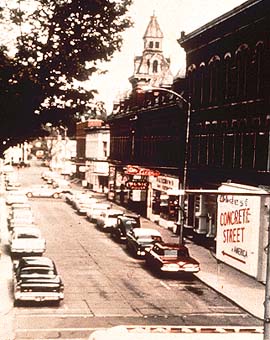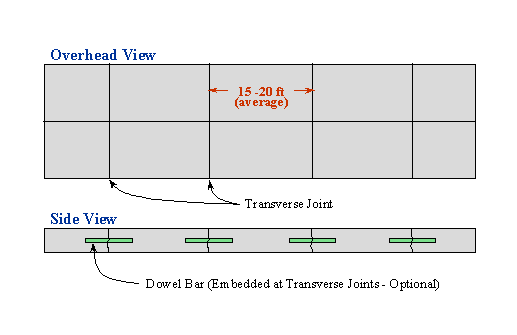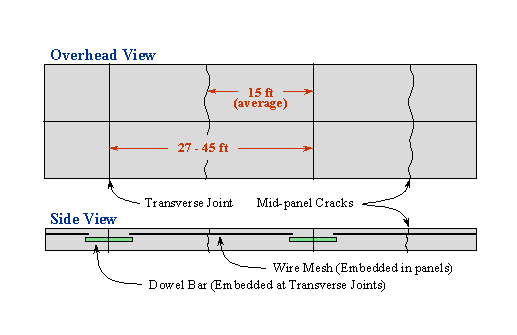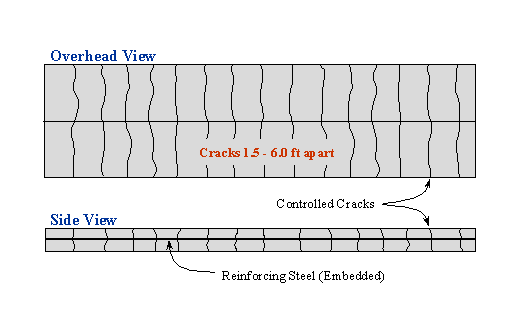Concrete Types
The first concrete road was built in 1893 in Bellefontaine, OH and it is still in service today. Since that pioneering project, concrete pavements have been refined into three common types: jointed plain (JPCP), jointed reinforced (JRCP) and continuously reinforced (CRCP). The one item that distinguishes each type is the jointing system used to control crack development.
Crack development is a complex subject. It is important to know that for various reasons concrete shrinks, contracts and expands, and bends from loading and the environment, and that these actions can induce cracks. It is equally important to know that this natural cracking can be easily controlled by the appropriate use of joints and/or reinforcing steel within the pavement. |

|
Jointed Plain Concrete Pavement
Jointed plain concrete pavements (JPCP) contain enough joints to control the location all of the expected natural cracks. The concrete cracks at the joints and not elsewhere in the slabs. Jointed plain pavements do not contain any steel reinforcement. However, there may be smooth steel bars at transverse joints and deformed steel bars at longitudinal joints. The spacing between transverse joints is typically about 15 feet for slabs 7-12 inches thick. Today, a majority of the U.S. state agencies build jointed plain pavements.

Jointed Reinforced Concrete Pavement
Jointed reinforced concrete pavements contain steel mesh reinforcement (sometimes called distributed steel). In jointed reinforced concrete pavements, designers increase the joint spacing purposely, and include reinforcing steel ( to hold together intermediate cracks in each slab. The spacing between transverse joints is typically 30 feet or more. In the past, some agencies used a spacing as great as 100 feet. During construction of the interstate system, most agencies in the Eastern and Midwestern U.S. built jointed-reinforced pavement. Today only a handful of agencies employ this design.

Continuously Reinforced Concrete Pavement
The third type of concrete pavement, continuously-reinforced (or CRC), does not require any transverse contraction joints. Transverse cracks are expected in the slab, usually at intervals of 3-5 ft. CRC pavements are designed with enough steel, 0.6-0.7% by cross-sectional area, so that cracks are held together tightly. Determining an appropriate spacing between the cracks is part of the design process for this type of pavement.
Continuously reinforced designs generally cost more than jointed reinforced or jointed plain designs initially due to increased quantities of steel. However, they can demonstrate superior long-term performance and cost-effectiveness. A number of agencies choose to use CRCP designs in their heavy urban traffic corridors.

To learn more on jointing, follow:
|


